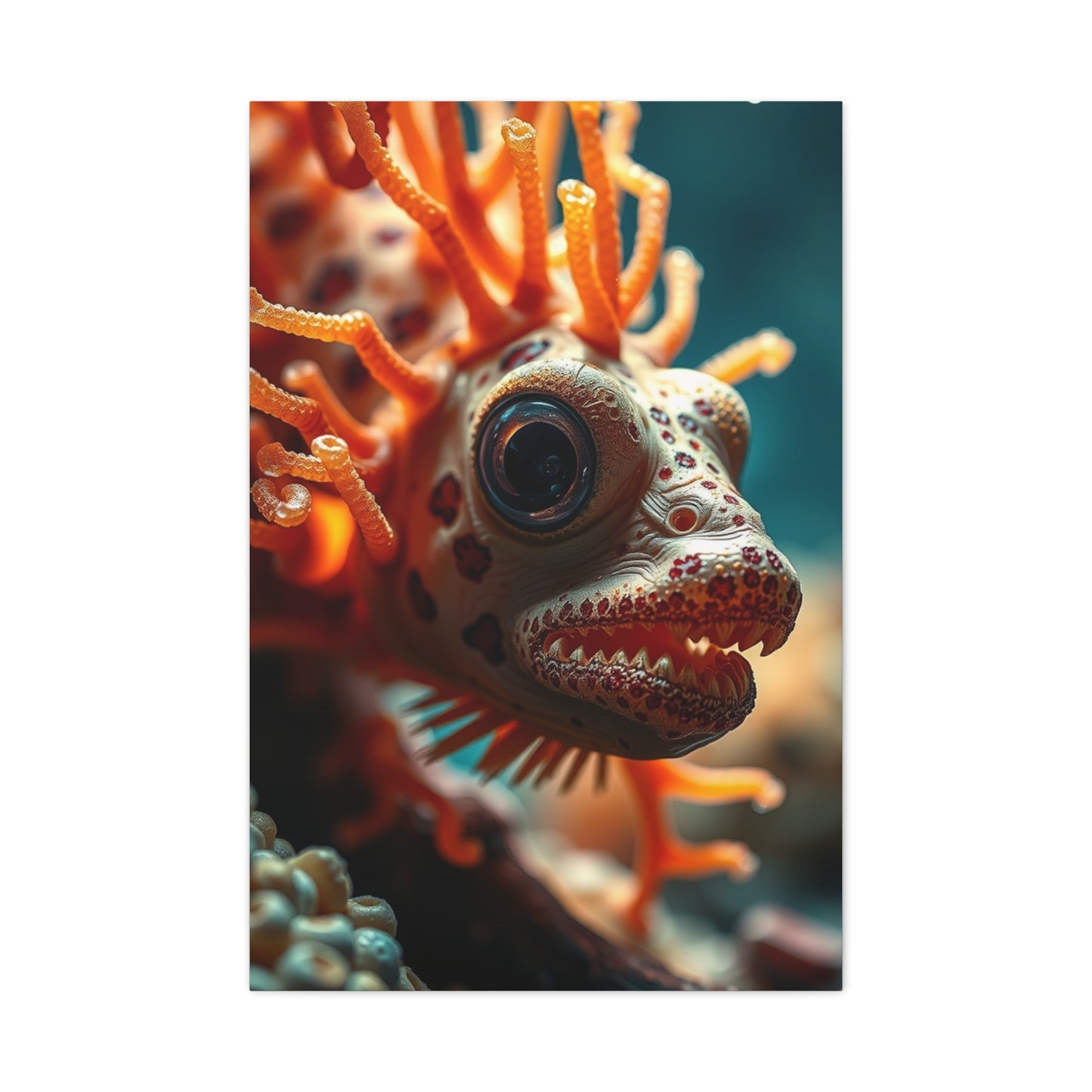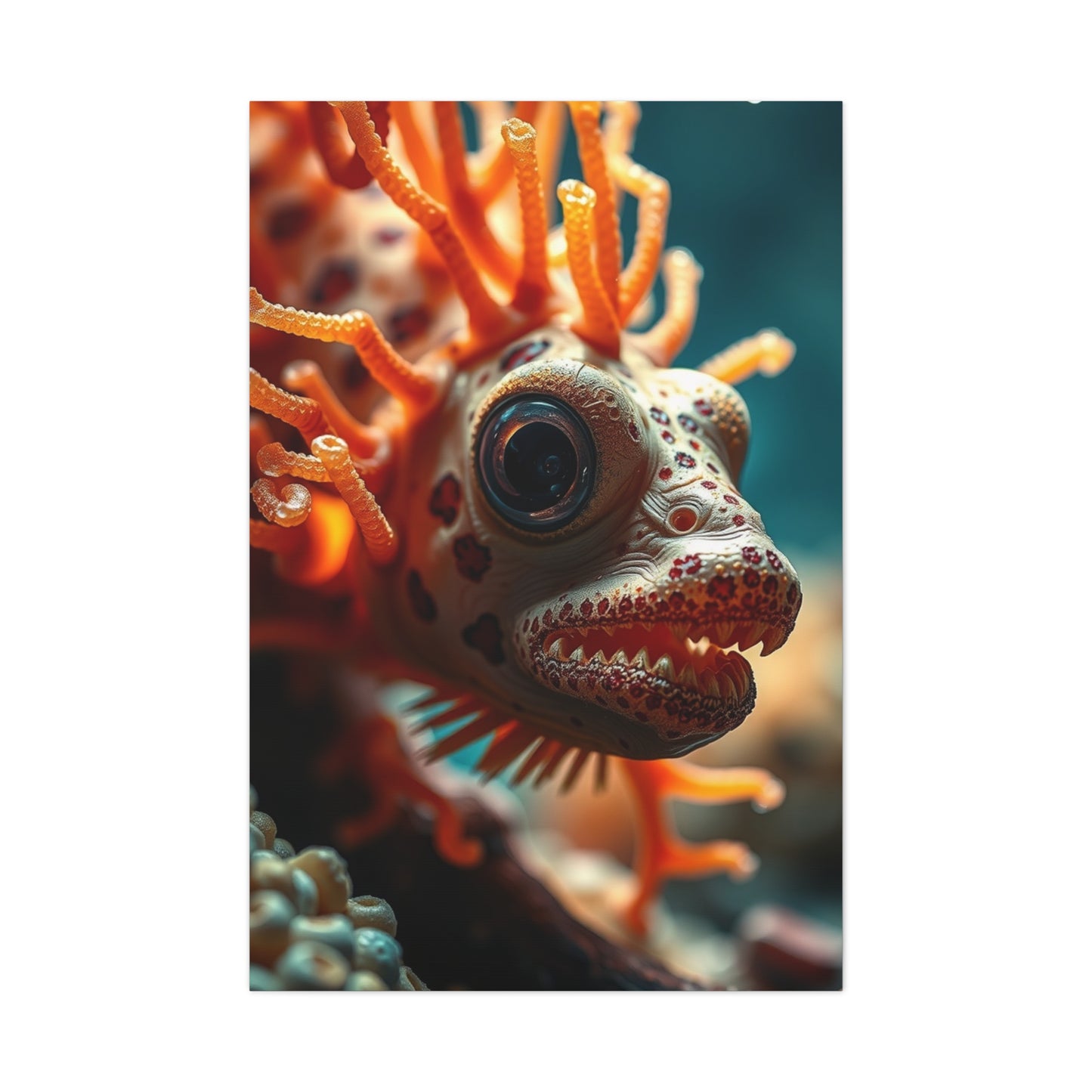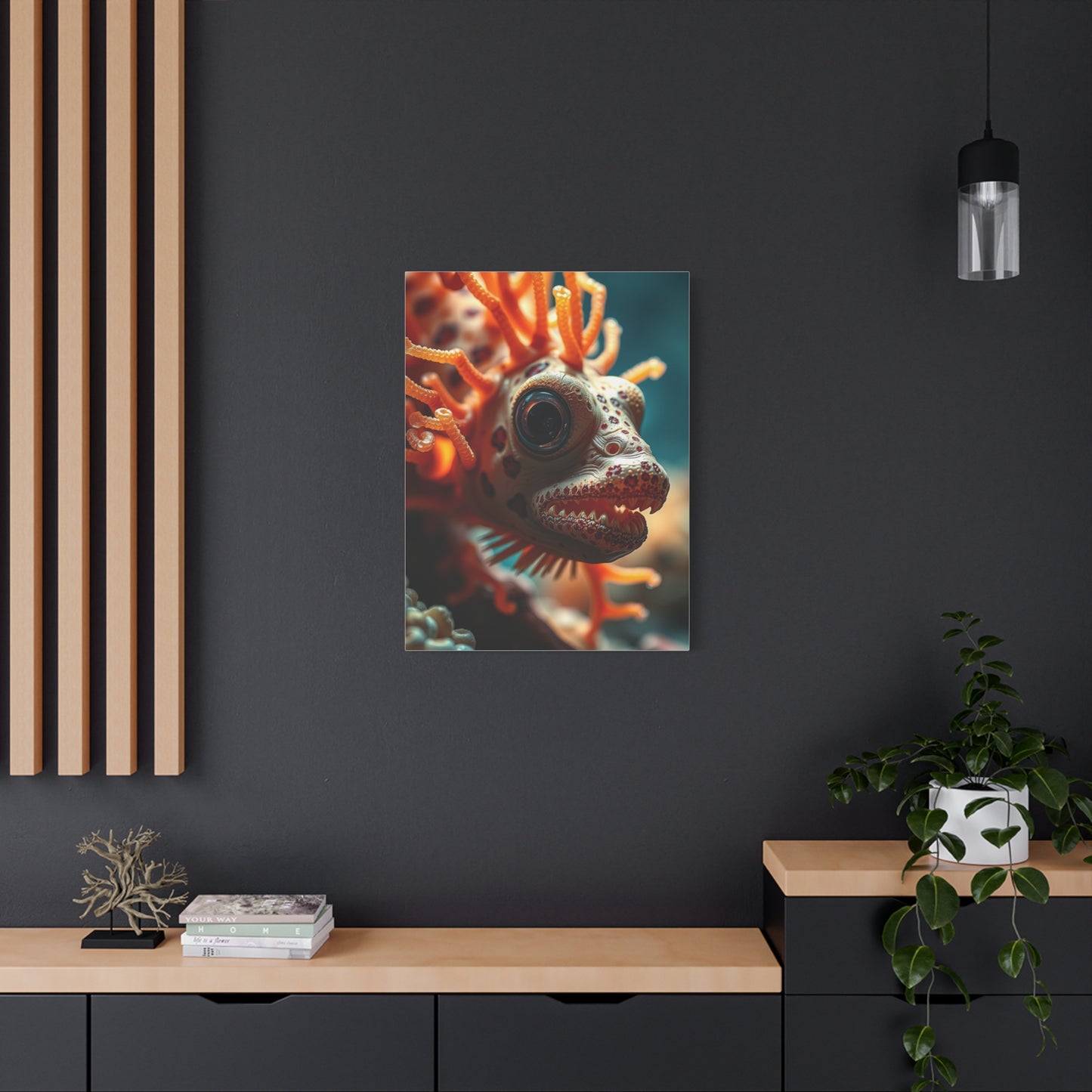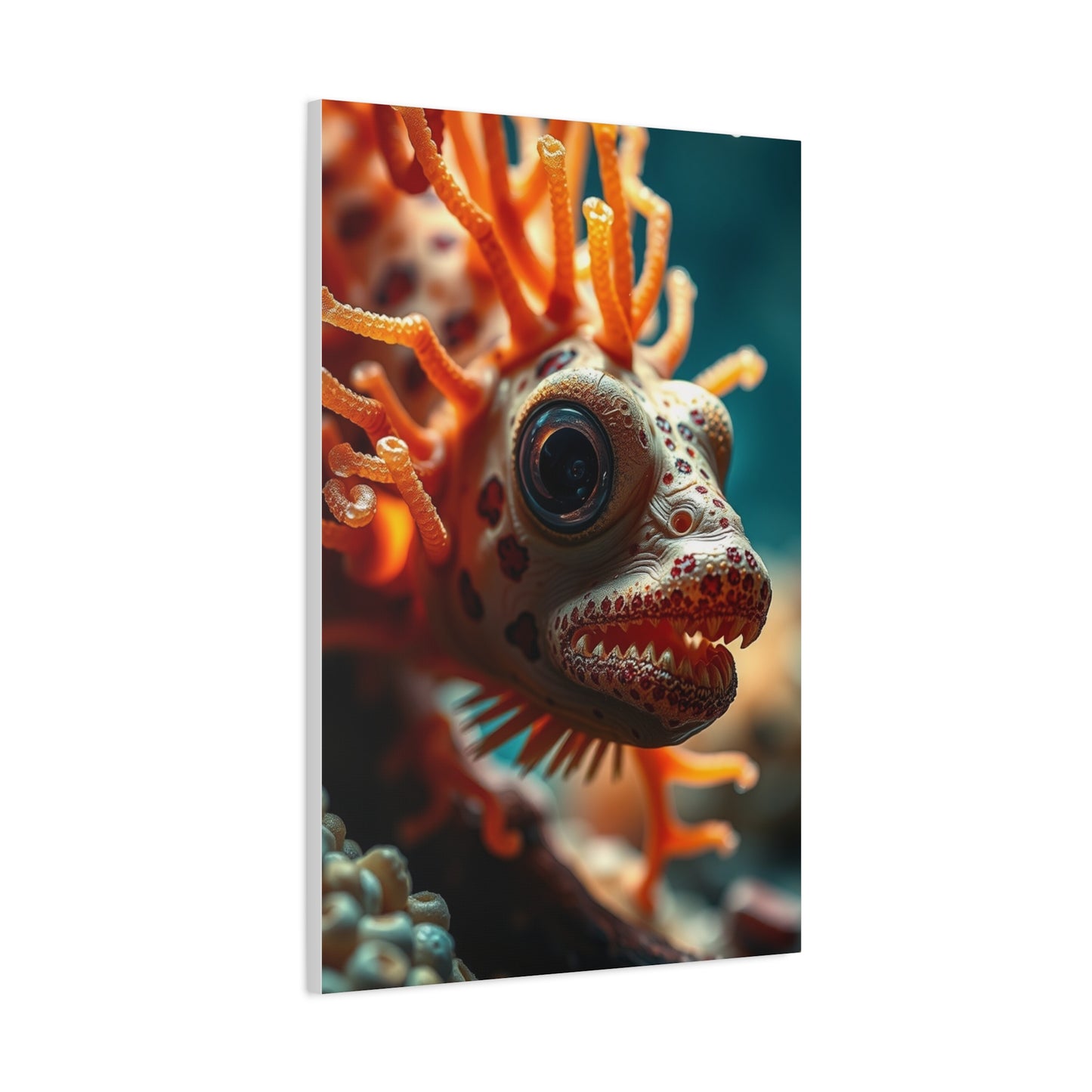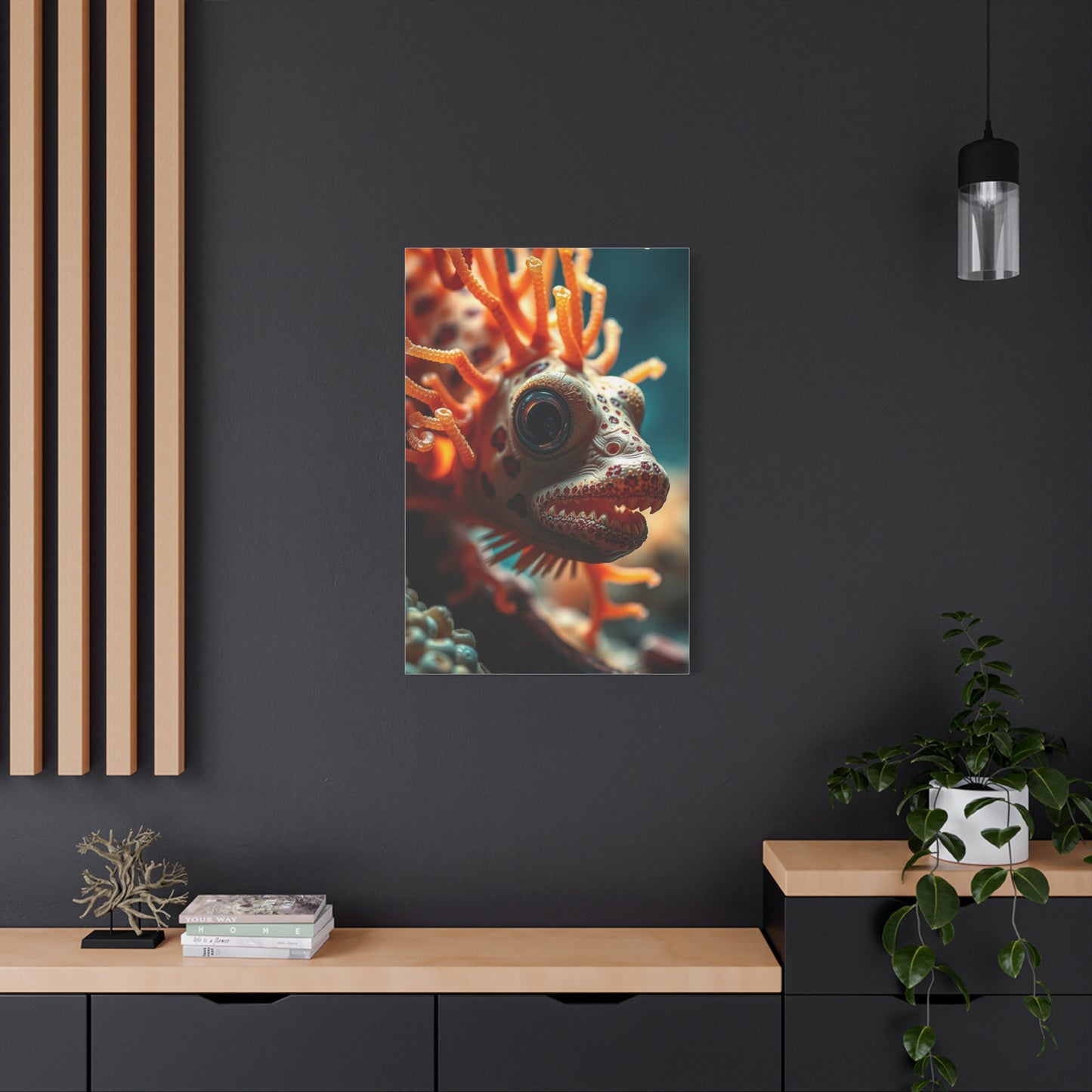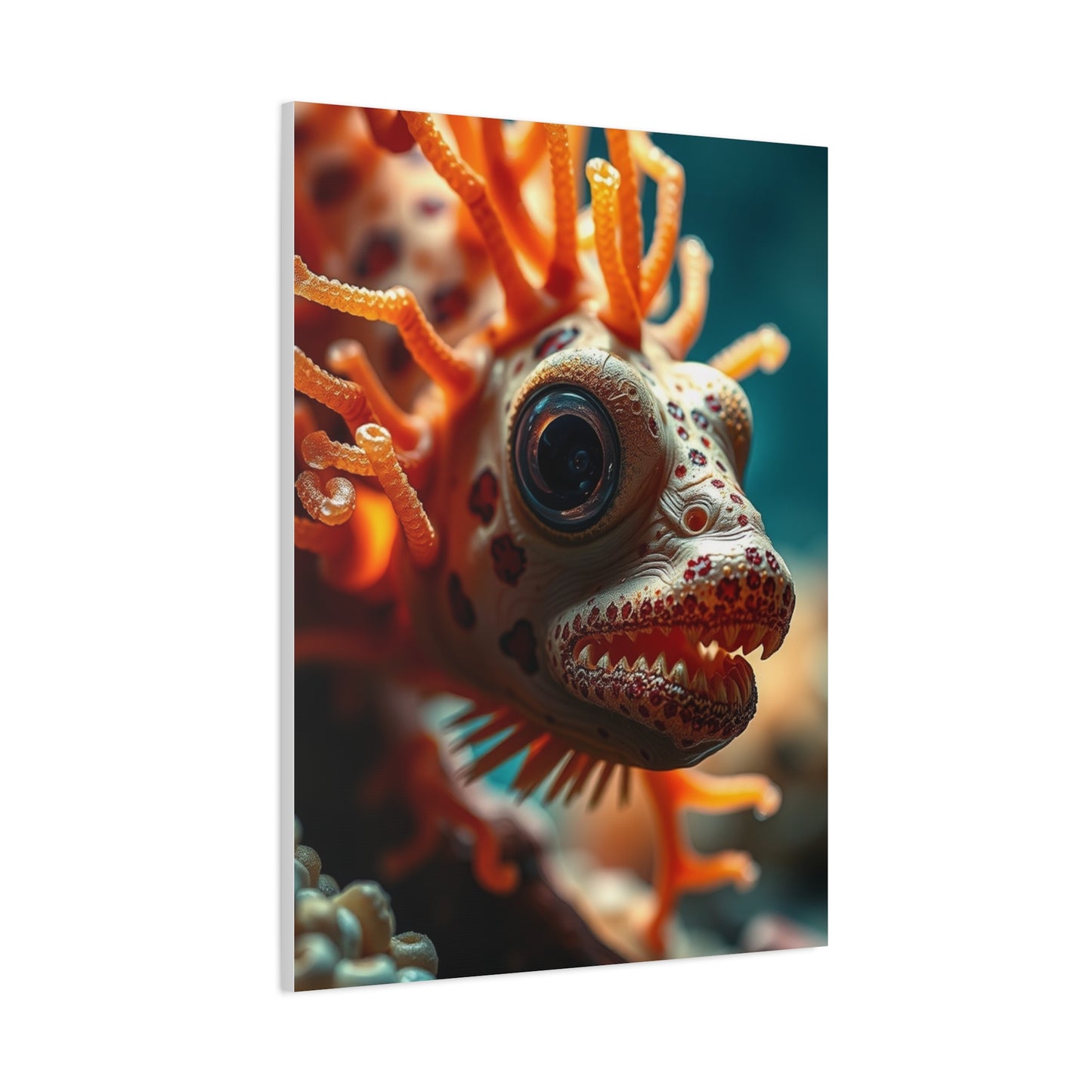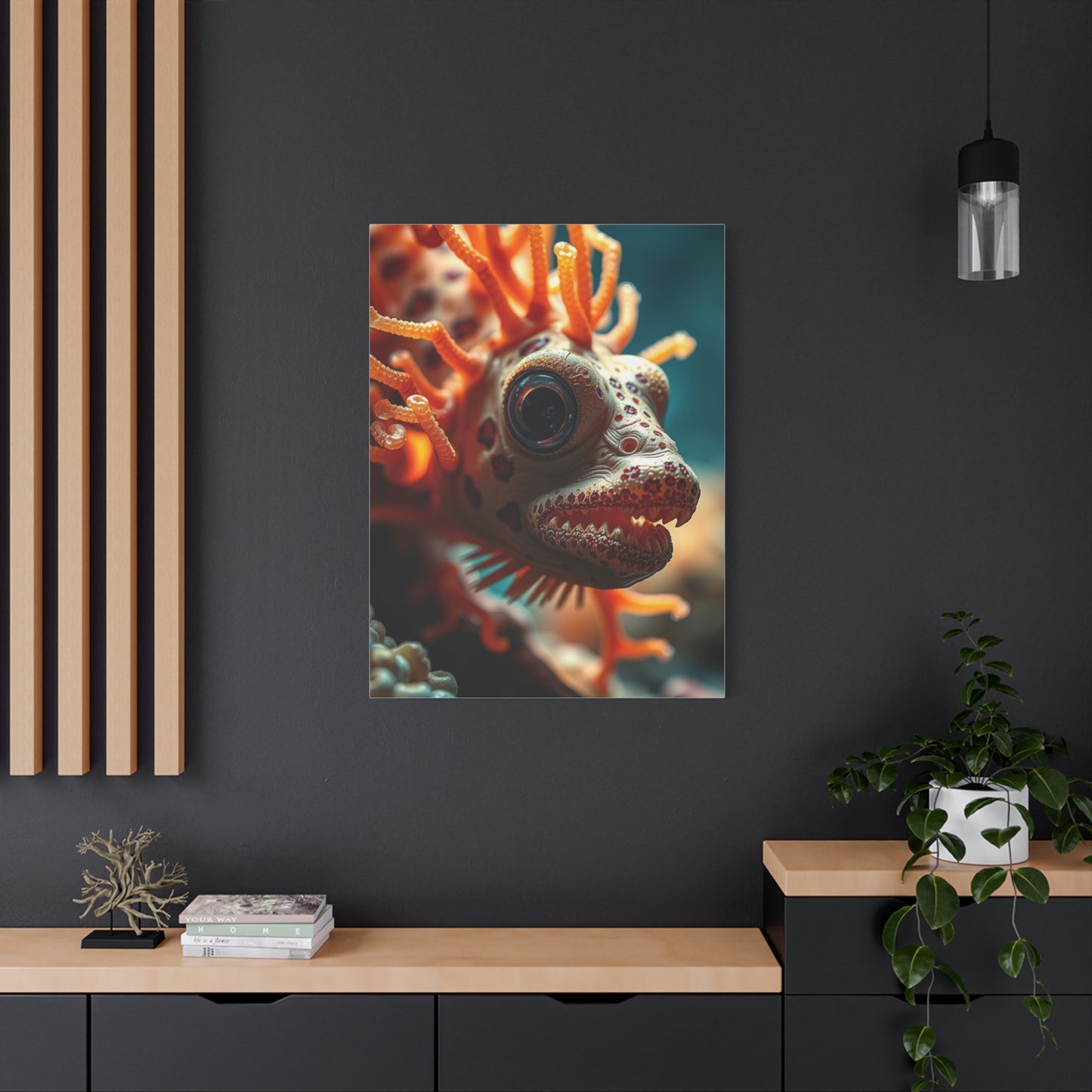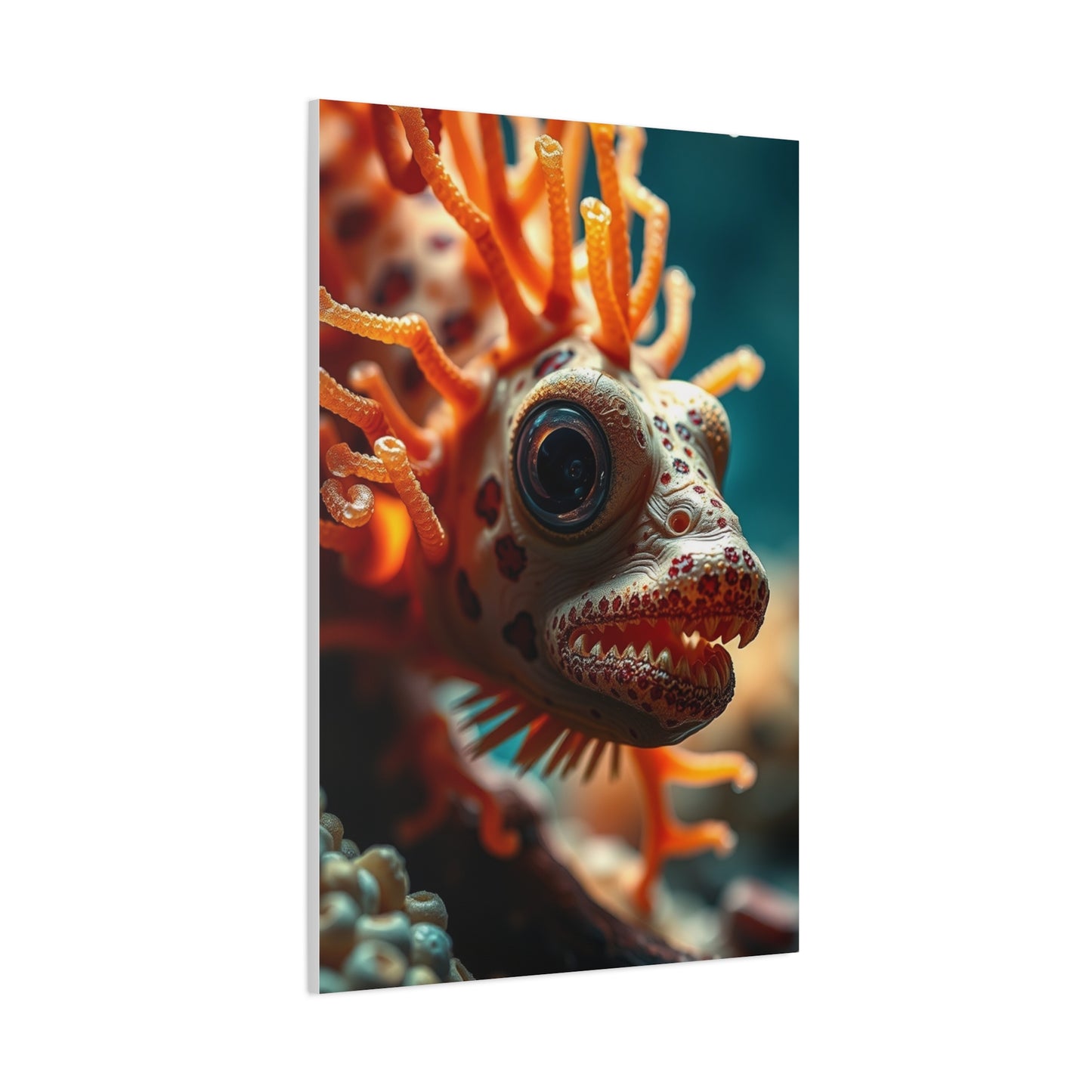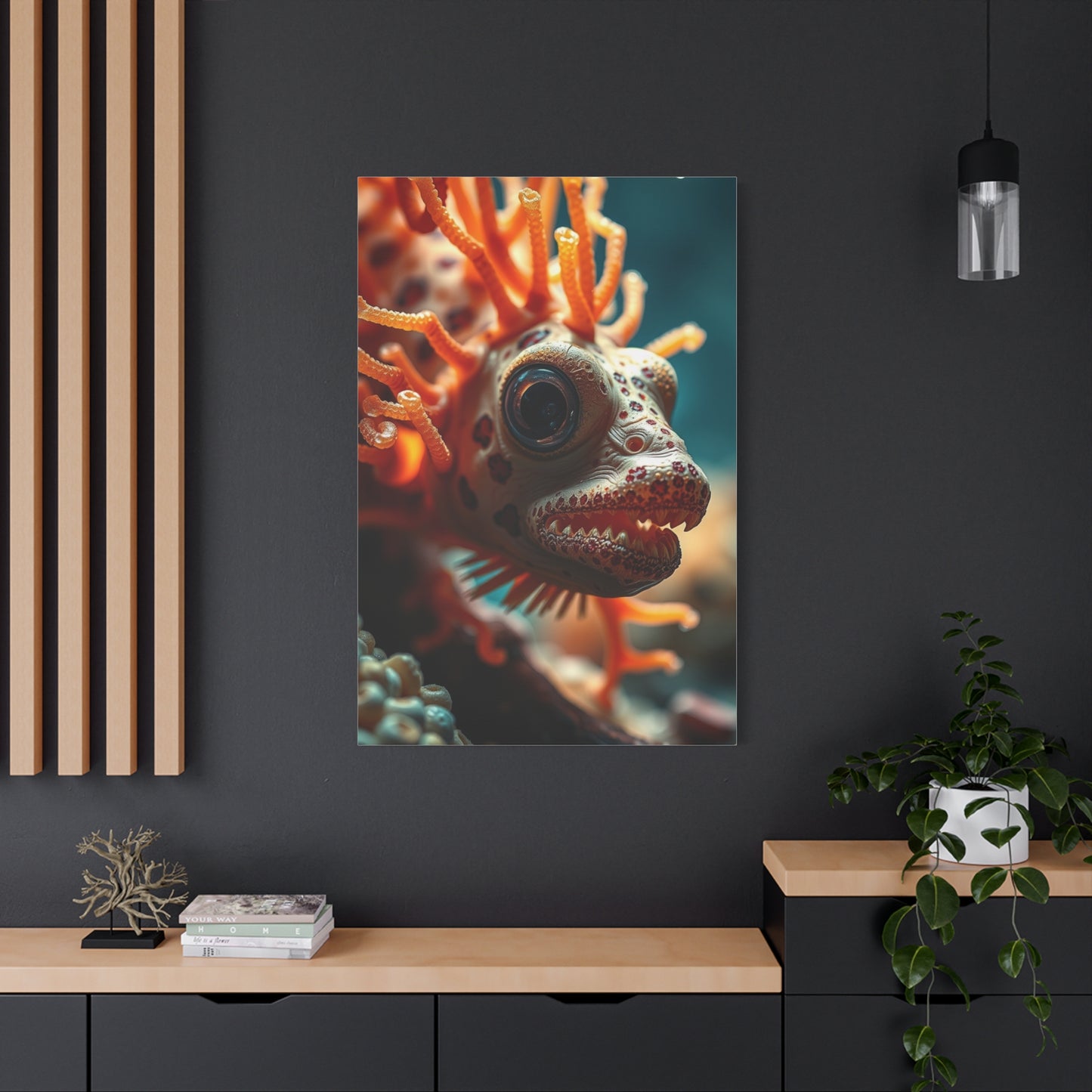The Allure of Aquatic Reverie Art: How Water-Inspired Wall Art Evokes a Sense of Calm and Wonder
The human fascination with water has existed since the dawn of civilization, manifesting in countless artistic expressions throughout history. Today, this timeless connection finds new life through aquatic reverie artistry wall art, a captivating genre that brings the serenity, mystery, and raw power of underwater worlds into contemporary homes and commercial spaces. This comprehensive exploration delves into every aspect of ocean-themed wall decorations, from their psychological impact to practical selection strategies, helping you understand why these pieces have become increasingly popular in interior design circles worldwide.
Water has always held a special place in human consciousness, representing life, renewal, mystery, and transformation. When we bring aquatic imagery into our living spaces through carefully chosen wall art, we invite these profound associations into our daily environment. The gentle movement of ocean waves, the mysterious depths of dark waters, the vibrant colors of coral reefs, and the graceful dance of marine creatures all combine to create visual experiences that resonate deeply with our innate connection to water.
Modern aquatic wall art encompasses an incredibly diverse range of styles, from photorealistic underwater photography to abstract interpretations of water movement, from minimalist line drawings of marine life to elaborate mixed-media installations that incorporate actual water elements. This diversity ensures that regardless of your personal aesthetic preferences or existing interior design scheme, there exists an aquatic art piece that can enhance your space while expressing your individual taste and personality.
The appeal of ocean-themed wall decorations extends beyond mere aesthetics. Research in environmental psychology has consistently demonstrated that natural imagery, particularly water scenes, can significantly reduce stress levels, lower blood pressure, and improve overall mental wellbeing. In our increasingly urbanized world, where many people spend the majority of their time indoors and disconnected from natural environments, aquatic wall art serves as a vital visual connection to the natural world, bringing elements of wilderness and wonder into spaces that might otherwise feel sterile or disconnected from nature.
The Profound Psychological Benefits of Aquatic Wall Decorations in Your Living Environment
The presence of water imagery in interior spaces creates measurable psychological effects that extend far beyond simple visual pleasure. When we gaze upon representations of oceans, rivers, or underwater scenes, our brains trigger specific neural responses associated with relaxation and stress reduction. This phenomenon, sometimes called the "blue mind" effect, describes the meditative state that water imagery can induce, characterized by calm, peacefulness, and a sense of happiness and wellbeing.
Neuroscientific research has revealed that viewing water scenes activates the parasympathetic nervous system, which governs our rest and digest response, counteracting the stress-inducing sympathetic nervous system that dominates modern life. When you hang aquatic wall art in your home or office, you create visual anchors that can help regulate your nervous system throughout the day, providing moments of calm amid the chaos of contemporary existence.
The color psychology associated with aquatic themes further enhances these benefits. Blues and greens, the dominant colors in ocean imagery, are universally associated with tranquility, trust, and healing. Blue specifically has been shown to lower heart rate and blood pressure, reduce feelings of anxiety, and improve focus and productivity. Meanwhile, green promotes balance, harmony, and renewal. When combined in aquatic artwork, these colors create a powerful visual remedy for the overstimulation and stress that characterize modern life.
Beyond these direct physiological effects, aquatic wall art also serves important psychological functions related to memory and identity. For many people, water holds personal significance connected to cherished memories of beach vacations, childhood summers by the lake, snorkeling adventures in tropical waters, or peaceful moments spent by rivers and streams. Displaying ocean-themed artwork can serve as a daily reminder of these positive experiences, helping to maintain emotional connections to meaningful times and places even when daily responsibilities keep us landlocked.
The sense of vastness and depth portrayed in many aquatic artworks also provides psychological space for contemplation and perspective. When we feel overwhelmed by the minutiae of daily concerns, gazing at an image of the open ocean or deep underwater scene can remind us of the larger context of existence, helping to put our problems in perspective. This capacity to shift perspective is one of the most valuable psychological benefits of incorporating nature imagery into our living spaces.
Exploring Diverse Styles Within Ocean-Inspired Artistic Expression for Interior Spaces
The world of aquatic wall art encompasses an extraordinary range of artistic styles, each offering unique aesthetic qualities and emotional resonances. Understanding these various approaches can help you select pieces that align with your personal taste while also complementing your existing interior design scheme.
Photorealistic ocean photography represents one of the most popular categories within this genre. These pieces capture actual moments from marine environments, from dramatic wave crashes frozen in time to serene underwater scenes featuring coral gardens and tropical fish. The appeal of photographic aquatic art lies in its ability to transport viewers to actual places, creating windows to worlds they may have visited or dream of exploring. High-quality ocean photography often features exceptional technical skill in capturing challenging subjects like moving water, underwater lighting, or the precise moment when a wave crests. These images serve not only as decoration but as documentation of the planet's remarkable aquatic biodiversity.
Abstract interpretations of water and marine themes offer a completely different aesthetic approach. Rather than depicting recognizable scenes or creatures, abstract aquatic art captures the essence, movement, and energy of water through color, form, and composition. These pieces might use flowing brushstrokes to suggest ocean currents, layered blues and greens to evoke depth and light penetration, or dynamic compositions to represent the power of storms and waves. Abstract aquatic artwork particularly appeals to those who want to incorporate water themes into modern or contemporary interior designs, as the non-representational nature of these pieces allows them to integrate seamlessly with minimalist or avant-garde aesthetics.
Impressionistic approaches to marine subjects bridge the gap between realism and abstraction, offering recognizable yet interpretive visions of aquatic scenes. Drawing inspiration from masters like Monet, who famously painted water lilies and harbor scenes, contemporary impressionistic aquatic art uses loose brushwork, emphasis on light effects, and emotional color choices to convey the feeling of being near or in water rather than providing detailed documentation. These pieces often evoke nostalgia and romanticism, making them particularly suitable for spaces designed to feel warm and inviting rather than stark or minimal.
Minimalist line art featuring marine subjects has gained tremendous popularity in recent years, particularly among those favoring Scandinavian or Japanese-inspired interior design aesthetics. These pieces reduce ocean subjects to their essential forms through simple, elegant lines, creating artwork that feels both contemporary and timeless. A single flowing line might suggest a wave, while a few strategic curves could evoke a swimming fish or diving seal. The restraint and simplicity of minimalist aquatic art allow these pieces to make statements without overwhelming spaces, making them ideal for smaller rooms or areas where multiple art pieces will be displayed together.
Mixed media and textural approaches to aquatic themes create multidimensional artworks that engage multiple senses. These pieces might incorporate actual beach sand, crushed shells, resin layers that mimic water depth and transparency, metallic elements suggesting sunlight on waves, or three-dimensional elements that project from the wall. The tactile quality of these artworks adds an extra dimension to the viewing experience, inviting closer inspection and creating visual interest from multiple angles as lighting conditions change throughout the day.
Selecting the Perfect Marine-Themed Artwork to Complement Your Interior Design Vision
Choosing aquatic wall art that will truly enhance your space requires consideration of multiple factors beyond simple personal preference. The most successful art selections create harmony between the artwork itself, the room where it will hang, and the people who will experience it daily.
Room function should heavily influence your aquatic art choices. In bedrooms, where the primary goal is rest and relaxation, softer, calmer water imagery works best. Consider artwork depicting peaceful underwater scenes, gentle waves lapping at shores, or serene ocean horizons at dawn or dusk. These images support the room's purpose by promoting the peaceful mindset needed for quality sleep. Avoid dramatic storm scenes or images with excessive energy, as these can create subtle tension that works against the bedroom's restful function.
Living rooms and family spaces can accommodate more varied aquatic themes since these areas serve multiple purposes and host people with different moods and needs. Here, you might choose more dynamic ocean scenes that spark conversation and interest, such as dramatic wave photography, vibrant coral reef images teeming with life, or abstract interpretations of ocean energy. These spaces can also successfully incorporate larger-scale pieces or multi-panel installations that become focal points for the entire room.
Home offices and workspaces benefit from aquatic art that balances calming effects with enough visual interest to maintain engagement and inspiration. Research suggests that having nature imagery visible from workspaces improves focus, creativity, and productivity while reducing mental fatigue. Consider ocean horizons that provide visual rest when you look up from screens, underwater scenes with interesting but not overwhelming detail, or abstract water themes in colors that complement your work mindset. Avoid overly tranquil or sedative imagery that might reduce energy and motivation during working hours.
Bathrooms present obvious opportunities for aquatic themes, creating cohesive design narratives where the artwork connects thematically to the room's function. However, moisture concerns require special attention to materials and framing. Choose artwork specifically designed to withstand humid environments, such as pieces behind sealed glass, waterproof canvas prints, or specialized bathroom-safe materials. The thematic appropriateness of water imagery in bathrooms allows for playful or bold choices you might not make in other rooms.
Color coordination between your aquatic artwork and existing room colors determines whether the piece will integrate harmoniously or create jarring visual discord. If your space features neutral tones like whites, grays, and beiges, you have maximum flexibility in choosing aquatic art with any color palette, from vibrant tropical blues and greens to moody deep ocean darks. If your room already incorporates strong colors, look for artwork that either complements these hues through analogous colors on the color wheel or provides interesting contrast through complementary opposites. Many aquatic artworks naturally incorporate blues and greens, which pair beautifully with warm neutrals, creating balanced schemes that feel both energizing and peaceful.
Understanding Various Materials and Production Methods for Marine-Themed Wall Pieces
The physical materials and creation methods used for aquatic wall art significantly impact both the aesthetic qualities and practical considerations of each piece. Understanding these options helps you make informed decisions that balance visual preferences with budgetary constraints and maintenance requirements.
Canvas prints represent perhaps the most popular medium for contemporary aquatic wall art. These pieces reproduce photographic or painted images onto canvas material stretched over wooden frames, creating artwork with texture and depth that flat prints cannot match. Canvas naturally complements aquatic imagery because its slight texture can enhance the perception of water movement or underwater atmosphere. Modern printing technologies produce canvas artwork with exceptional color accuracy and detail, creating pieces virtually indistinguishable from original paintings at a fraction of the cost. Canvas also offers practical advantages, including relatively light weight for easy hanging, durability that resists fading when properly treated, and versatility that allows display without additional framing, though frames can be added for extra protection or decorative effect.
Framed photographic prints under glass provide the sharpest, most detailed representation of aquatic imagery, making them ideal for ocean photography where clarity and precision matter. The glass covering protects the print from environmental damage, including moisture, dust, and UV light, ensuring long-term color stability. When selecting framed aquatic prints, pay attention to both the quality of the print itself and the framing materials. Archival-quality printing on acid-free paper with UV-protective glass ensures your artwork will look vibrant for decades. Frame styles should complement both the artwork and your interior design aesthetic, from sleek modern metal frames for contemporary spaces to natural wood frames for coastal or traditional settings.
Metal prints represent an increasingly popular choice for aquatic artwork, particularly for modern or industrial interior designs. This process infuses dyes directly into specially coated aluminum sheets, creating images with remarkable vibrancy, depth, and luminosity. The reflective properties of metal particularly enhance aquatic imagery, adding shimmer and light that mimics the play of sunlight on water surfaces. Metal prints offer exceptional durability, resisting fading, moisture damage, and physical wear far better than paper or canvas. The sleek, frameless appearance of most metal prints contributes to clean, contemporary aesthetics while the lightweight material simplifies hanging even for large-scale pieces.
Acrylic prints create stunning three-dimensional effects particularly suited to underwater and ocean imagery. This process mounts high-resolution images behind clear acrylic sheets, often with additional backing for depth. Light penetrates through the acrylic, illuminating the image from within and creating extraordinary color vibrancy and depth perception. For aquatic subjects, this effect can remarkably simulate the experience of looking through water, adding realism and visual impact. Acrylic prints make bold statements in contemporary spaces and work particularly well for smaller pieces where the extra cost per square foot is manageable. The glossy, modern finish of acrylic suits sleek, minimalist interiors while the substantial physical presence of these pieces commands attention and creates focal points.
Original paintings on various substrates offer unique, one-of-a-kind aquatic artwork with inherent value beyond their decorative function. Original aquatic art ranges from affordable pieces by emerging artists to significant investments in works by established marine painters. The visible brushstrokes, texture variations, and subtle color blending in original paintings create viewing experiences that reproductions cannot fully capture. When purchasing original aquatic paintings, consider not only immediate aesthetic appeal but also the artist's reputation, the piece's potential to appreciate in value, and the personal satisfaction of owning truly unique artwork. Original paintings also offer opportunities to commission custom pieces tailored precisely to your space, color scheme, and personal vision.
Mastering Proper Installation Methods for Various Types of Aquatic Wall Decorations
Correctly hanging your aquatic wall art ensures both visual impact and physical security while protecting both your artwork and walls. Different types of pieces require specific installation approaches for optimal results.
Before hanging any artwork, carefully consider placement within the room. The center of your artwork should typically hang at eye level, generally between fifty-seven and sixty inches from the floor, though this can be adjusted based on ceiling height, furniture placement, and viewing angles. In rooms where people primarily sit, like dining rooms or bedrooms, consider slightly lower placement to maintain comfortable viewing angles. For artwork hanging above furniture, leave six to twelve inches between the furniture top and the bottom of the frame, creating visual connection without crowding.
Weight capacity becomes crucial when hanging larger aquatic art pieces or those using heavy materials like metal or acrylic. Standard picture hangers suitable for lightweight frames cannot safely support substantial pieces. For heavier artwork, use wall anchors appropriate to your wall type. In drywall, toggle bolts or threaded anchors provide secure mounting points by distributing weight across larger wall areas. In plaster walls, specialty anchors designed for this harder but more fragile material prevent cracking and ensure stability. For the heaviest pieces, locating and mounting directly into wall studs provides maximum security, though this may limit placement flexibility.
Canvas pieces without frames typically include hanging hardware already attached to the wooden stretcher bars behind the canvas. D-rings mounted on each side of the frame back work with hanging wire to create secure two-point suspension that keeps the canvas level and stable. When hanging wire-suspended pieces, ensure the wire is rated for well above the artwork's weight, creating safety margins for unexpected stress. The wire should be taut enough to keep the canvas close to the wall but not so tight that it might pull free from mounting hardware over time.
Large-scale aquatic artworks or multi-panel installations require extra planning and often benefit from having a second person assist with leveling and securing. For multi-panel pieces telling a continuous visual story across several canvases, precise alignment and consistent spacing create cohesive overall impressions. Mark all hanging points with light pencil marks before making any holes, using a level to ensure alignment. Some installers create paper templates matching the exact dimensions and hanging points of each panel, taping these to the wall to perfect the layout before committing to permanent holes.
Lighting dramatically affects how aquatic wall art appears and should be considered during installation. Natural light from windows can beautifully illuminate artwork but also poses fading risks from UV exposure. Position valuable or delicate pieces away from direct sunlight or use UV-protective glazing. For spaces lacking natural light or for creating dramatic evening displays, consider installing dedicated picture lights or track lighting aimed at your aquatic artwork. The right lighting enhances colors, creates depth, and draws attention to your carefully chosen pieces, transforming them from passive decorations into dynamic focal points that change throughout the day.
Creating Cohesive Ocean-Inspired Interior Design Schemes Around Your Wall Art Selections
Aquatic wall art can serve as the foundation for entire room designs, with other elements selected to complement and enhance the themes, colors, and moods established by your chosen artwork. This approach creates unified, intentional spaces that feel professionally designed rather than randomly assembled.
Color palette extraction from your aquatic artwork provides a foolproof method for creating harmonious room designs. Identify the dominant and accent colors in your chosen piece, then incorporate these hues throughout the space in varying proportions. If your artwork features primarily deep ocean blues with touches of seafoam green and sandy beige, bring these colors into the room through upholstery, throw pillows, rugs, curtains, and accessories. This repetition creates visual rhythm and cohesion, making the space feel intentionally designed and harmonious. Digital tools and apps can help identify exact color values from artwork images, allowing you to match paint colors or find coordinating textiles with precision.
Coastal and nautical design themes naturally complement aquatic wall art, though these styles can range from subtle and sophisticated to bold and thematic. A refined coastal approach incorporates natural materials like weathered wood, rattan, jute, and linen in neutral color palettes punctuated by ocean blues and greens. This creates spaces that feel connected to seaside environments without resorting to obvious nautical cliches like anchors and ship wheels. Reserve overtly nautical elements for subtle accents, allowing your aquatic artwork to provide the primary water connection while surrounding decor remains elegantly understated.
Natural materials and textures that echo marine environments enhance the authenticity and sensory richness of spaces featuring aquatic art. Consider incorporating driftwood furniture pieces, coral-inspired decorative objects, mother-of-pearl inlays, sea glass collections, natural fiber rugs resembling beach sand, and smooth river rocks displayed in bowls or vases. These tactile elements create multisensory experiences that complement the visual impact of your wall art, making rooms feel more completely immersed in aquatic themes. The key to success with natural materials lies in curation rather than accumulation; select a few meaningful, high-quality pieces rather than cluttering spaces with beach-themed tchotckes.
Layered textile approaches add depth and comfort to rooms featuring aquatic wall art. Start with foundational pieces like sofas and curtains in neutral, natural colors, then add layers of oceanic blues, greens, and aquas through throw pillows, blankets, and accent textiles. Varying the scales of patterns also creates visual interest; you might combine large-scale wave prints with smaller geometric patterns inspired by fish scales or coral structures, unified through consistent color palettes. Different textile textures, from smooth cotton to nubby linen to plush velvet, add tactile variety while maintaining color cohesion.
Living plant selections can reinforce aquatic themes while bringing literal life into your space. While true aquatic plants generally require aquarium setups, many houseplants evoke watery environments through their forms and colors. Ferns suggest lush coastal forests where land meets sea, while plants with flowing, ribbon-like leaves like spider plants or ponytail palms create visual movement reminiscent of underwater vegetation. Blue-green succulents echo ocean colors while requiring minimal maintenance, making them practical choices for busy households. For the truly committed, small desktop aquariums or water features create literal aquatic elements that complement your wall art while adding gentle movement and sound.
Exploring Emotional Resonance and Symbolic Meanings Within Marine-Themed Artwork
Beyond their obvious aesthetic appeal, aquatic artworks carry rich layers of symbolic meaning and emotional resonance that add depth to their presence in our living spaces. Understanding these deeper dimensions can help you select pieces that speak to your personal values, aspirations, and life experiences.
Water itself holds profound symbolic significance across virtually all human cultures and spiritual traditions. As the source and sustainer of life, water represents birth, renewal, purification, and transformation. Displaying aquatic art connects your space to these universal themes, creating environments that feel not just decorative but meaningful and nurturing. In times of personal change or difficulty, water imagery can serve as visual reminders that transformation is natural and necessary, that calm will return after storms, and that life continually renews itself.
Ocean horizons, where water meets sky in endless vistas, symbolize infinite possibility, freedom from constraints, and the unknown territories that await exploration. Artwork featuring open ocean horizons can inspire feelings of possibility and adventure, making such pieces particularly meaningful for home offices, creative spaces, or anywhere you engage in planning, dreaming, and envisioning future possibilities. The meditative quality of gazing toward distant horizons also provides mental space for contemplation and perspective-taking, valuable in our distraction-filled modern world.
Underwater scenes revealing hidden realms beneath the surface carry symbolism related to exploring unconscious depths, discovering hidden truths, and recognizing beauty in unexpected places. These images remind us that surface appearances often conceal vast worlds of complexity and wonder, encouraging us to look deeper in our own lives and relationships. Underwater artwork particularly appeals to those drawn to psychology, spirituality, and inner exploration, serving as visual metaphors for the journey inward toward self-understanding.
Specific marine creatures featured in aquatic art carry their own symbolic meanings drawn from natural history, mythology, and cultural associations. Whales and dolphins represent intelligence, communication, community, and emotional depth, making artwork featuring these charismatic megafauna popular among those who value connection and relationship. Sea turtles symbolize patience, longevity, wisdom, and determination, their ancient lineage and remarkable migrations inspiring respect and admiration. Octopi and squid embody intelligence, adaptability, and mystery, their alien consciousness and remarkable camouflage abilities fascinating to those interested in evolution and cognition.
Storm and wave imagery explores themes of power, respect for nature, emotional intensity, and the capacity to weather difficulties. Dramatic seascapes featuring towering waves, churning waters, and dark skies create visual tension and energy, making them less suitable for spaces designed for rest but powerful additions to areas where you want to feel energized and reminded of your own strength and resilience. These images acknowledge that life includes storms alongside calm waters, honoring the full spectrum of human experience rather than presenting only peaceful visions.
Discovering Emerging Artists and Innovative Approaches Within Aquatic Art Communities
The world of aquatic artistry continues to evolve as new artists bring fresh perspectives and innovative techniques to marine subjects. Exploring contemporary aquatic art scenes connects you with cutting-edge creativity while potentially discovering pieces that will appreciate in value as artists' careers develop.
Digital art and NFTs have revolutionized how aquatic art is created, distributed, and collected. Digital artists use sophisticated software to create stunning marine imagery impossible to achieve through traditional media, from hyperrealistic underwater scenes incorporating multiple photographs to completely imagined alien oceans. Some aquatic digital art exists only in virtual form, purchased as NFTs and displayed on digital frames or in virtual spaces. Others are produced as limited-edition physical prints combining digital creation with traditional output methods. The accessibility of digital tools has democratized aquatic art creation, allowing talented artists worldwide to develop and share their visions without requiring expensive studio spaces or traditional art education.
Environmental activism increasingly influences contemporary aquatic art, with many marine artists viewing their work as advocacy for ocean conservation. These artists create pieces that highlight the beauty of threatened ecosystems, document the impacts of climate change and pollution on marine environments, or reimagine ocean futures under different environmental scenarios. Purchasing conservation-focused aquatic art allows collectors to support both artistic practice and environmental causes, with many artists donating portions of proceeds to ocean conservation organizations. This intersection of art and activism adds layers of meaning to artwork, transforming decorative purchases into ethical statements.
Biomimicry and scientific collaboration bring unprecedented accuracy and wonder to contemporary aquatic art. Some marine artists work directly with scientists, gaining access to research vessels, submersibles, and cutting-edge marine science that informs their artistic practice. This collaboration produces artwork that balances aesthetic impact with scientific accuracy, appealing to those who want marine art that reflects actual ocean biodiversity rather than romanticized or inaccurate representations. Scientific illustration techniques blend with fine art approaches to create pieces that satisfy both intellectual curiosity and aesthetic sensibilities.
Indigenous and traditional perspectives on ocean themes offer alternatives to the Western art historical approaches that have long dominated marine artwork. Artists from Pacific Island cultures, coastal indigenous communities, and traditional seafaring societies bring culturally specific relationships with oceans to their artwork, expressing connections to marine environments that differ fundamentally from recreational or extractive orientations. These perspectives often emphasize reciprocal relationships with ocean life, viewing marine animals as relatives and teachers rather than resources or decoration subjects. Collecting aquatic art from diverse cultural perspectives broadens understanding while supporting cultural continuity and artistic sovereignty.
Experimental materials and techniques push the boundaries of what aquatic art can be and how it functions. Some artists incorporate actual seawater, sand, and marine organisms into their work through resin encapsulation or other preservation techniques, creating pieces that literally contain fragments of ocean environments. Others explore kinetic sculpture and installation art that moves like water or responds to viewer presence, transforming passive wall decorations into interactive experiences. Still others experiment with environmentally responsive materials that change color or appearance with humidity and temperature fluctuations, creating artwork that evolves throughout days and seasons.
Practical Maintenance Strategies for Preserving Aquatic Wall Art Investment Value
Proper care and maintenance ensure your aquatic wall art remains vibrant and beautiful for years or decades, protecting both its aesthetic value and financial investment. Different materials require specific care approaches for optimal preservation.
Dust accumulation represents the most common threat to artwork longevity, attracting moisture and potentially scratching surfaces during improper cleaning. For framed pieces under glass, gently dust the glass surface with microfiber cloths designed specifically for delicate surfaces, using light pressure and avoiding harsh circular motions that can create scratches. Never spray cleaning solutions directly onto glass covering artwork; instead, lightly mist your cloth away from the piece, then wipe the glass. For frames themselves, use dry dusting methods unless frames require deeper cleaning, in which case remove the artwork from frames before applying any moisture.
Canvas pieces without glass covering require even more careful cleaning approaches since you interact directly with the artwork surface. Use soft, natural-bristle brushes or microfiber cloths to very gently remove dust from canvas surfaces, working in one direction rather than back-and-forth motions that might embed particles. Never use wet cleaning methods on canvas artwork unless specifically instructed by the artist or manufacturer, as moisture can cause canvas to warp, colors to run, or protective coatings to degrade. For valuable canvas pieces showing signs of damage or deterioration, consult professional art conservators rather than attempting home repairs.
Sunlight exposure poses significant risks to virtually all artwork materials, causing colors to fade, papers to yellow, and materials to become brittle over time. While moderate indirect natural light generally poses minimal risk, direct sunlight streaming through windows can damage artwork within months or years depending on intensity and duration. If you want to display aquatic art where it will receive direct sun exposure, use UV-protective glazing for framed pieces or UV-protective varnishes for canvas works. Window treatments that filter UV rays while allowing visible light through provide another layer of protection. Alternatively, embrace rotation systems where pieces in high-UV locations are periodically swapped with those in protected positions, distributing sun exposure across your collection.
Humidity control matters particularly for photographic prints, certain canvas pieces, and any artwork incorporating paper elements. Excessive humidity encourages mold growth, warping, and adhesive failure, while extremely dry conditions can cause brittleness and cracking. Ideally, display artwork in climate-controlled environments maintaining relative humidity between forty and fifty-five percent. In particularly humid locations like coastal areas or damp basements, consider using dehumidifiers to protect valuable artwork. Conversely, in arid climates or during dry winter months when heating systems reduce indoor humidity, humidifiers can prevent desiccation damage.
Regular inspections allow early detection of problems before they become serious. Every few months, examine your aquatic artwork for signs of deterioration including color fading, frame loosening, backing material degradation, mold spots, insect damage, or changes in how pieces hang. For valuable pieces, maintain photo documentation of their condition over time, which can be valuable for insurance purposes and helps track subtle deterioration not obvious to memory alone. If you notice concerning changes, consult professionals promptly; early intervention prevents minor issues from becoming major conservation challenges.
Acquiring Quality Marine-Themed Wall Decorations
Print-on-demand services have democratized access to high-quality aquatic artwork by eliminating the inventory costs that traditionally inflated art prices. These services maintain digital libraries of thousands of marine images, printing and shipping only when orders are placed. This model allows extremely competitive pricing since no physical inventory requires storage or risks remaining unsold. Quality varies among print-on-demand providers, so examine material specifications, read customer reviews, and order samples when possible before committing to larger or more expensive pieces. Many print-on-demand services offer sales and discount codes, making already-affordable aquatic art even more budget-friendly.
Direct artist purchases through online platforms and social media eliminate gallery markups that often double or triple artwork prices. Many talented aquatic artists sell directly through personal websites, Instagram shops, or artist-focused marketplace platforms. When buying directly from artists, you often pay significantly less than gallery prices while ensuring artists receive fair compensation for their work. Building relationships with emerging aquatic artists can lead to first access to new work, commission opportunities, and the satisfaction of supporting creative careers while they develop.
Renting artwork programs offered by some galleries, libraries, and art organizations allow regular refreshment of your displayed aquatic art without purchase commitments. These programs typically charge modest monthly or annual fees in exchange for access to rotating artwork selections. Rental programs particularly benefit those who enjoy frequent change, want to try pieces before purchasing, or lack the storage space to maintain large collections. Some rental programs apply rental payments toward eventual purchases if you decide to permanently acquire a piece you have been living with.
Secondhand and vintage aquatic art sources like estate sales, thrift stores, consignment shops, and online marketplaces yield treasures at fraction-of-retail prices. Dated frames can be updated or replaced relatively inexpensively, transforming overlooked vintage pieces into statement artwork suitable for contemporary spaces. Developing an eye for quality and value in secondhand contexts takes time and research, but the combination of affordable prices and the thrill of discovery makes hunting for vintage aquatic art an enjoyable hobby beyond simple budget-motivated necessity.
DIY approaches to creating aquatic artwork offer maximum budget flexibility while adding personal creative expression to your space. Even those without formal art training can create beautiful pieces using accessible techniques like abstract fluid art, watercolor experimentation, photography printing, collage from ocean magazines and books, or digital design using free software. The imperfections and personal touches in handmade artwork often carry more emotional value than purchased pieces, creating conversations and connections impossible with mass-produced items. DIY art projects also offer excellent family activities and opportunities to involve children in creating artwork that documents their current interests and abilities.
Maintaining Fresh Visual Experiences with Marine Art
Rather than displaying the same aquatic artwork year-round, rotating pieces seasonally maintains visual interest while allowing expression of different moods and themes appropriate to changing seasons and light conditions.
Spring rotations might emphasize renewal, birth, and increasing light after winter darkness. Consider displaying aquatic art featuring baby sea creatures, vibrant tropical colors that herald warming temperatures, underwater scenes filled with active marine life, or coastal landscapes showing spring flowers near beaches. The psychological associations between spring and new beginnings make this season ideal for refreshing your living spaces with lighter, more energetic aquatic themes that mirror the returning vitality in natural world.
Summer displays can embrace the full vibrancy of aquatic themes, featuring the brightest blues and greens, active beach scenes, surfing and swimming imagery, and tropical underwater panoramas. This season allows maximum playfulness and intensity in aquatic art choices since summer light and longer days provide the energetic context that balances bold, saturated imagery. Summer is also ideal for displaying multiple smaller aquatic pieces together in gallery wall arrangements, creating visual abundance that matches the season's natural profusion.
Autumn rotations transition toward more contemplative and dramatic marine themes as days shorten and weather cools. Consider stormy seascapes, moody ocean horizons, deeper colors emphasizing dark blues and greens, and imagery suggesting depth and mystery rather than surface brightness. Artwork featuring marine mammals like whales preparing for winter migrations particularly suits autumn displays, connecting interior spaces to the natural cycles proceeding outside. The introspective quality of autumn light and weather creates perfect context for aquatic art that invites contemplation rather than energetic engagement.
Winter displays might emphasize the ocean's power and mystery, featuring dramatic wave photography, abstract interpretations of water's raw force, or serene frozen coastal scenes. While tropical aquatic themes can provide welcome escapes from winter darkness, some prefer acknowledging the season's character through artwork that reflects natural winter qualities. Icy color palettes featuring pale blues, whites, and silvers create cohesion with winter light while maintaining aquatic themes. Winter is also excellent for displaying smaller collections of premium pieces, focusing attention on quality rather than quantity as shorter days mean less time spent in spaces where artwork hangs.
Practical approaches to seasonal rotation include maintaining storage systems that protect off-display artwork while keeping it accessible. Use archival-quality materials to store pieces not currently displayed, keeping them in climate-controlled areas away from concrete floors or exterior walls where temperature and humidity fluctuations are greatest. Label stored pieces clearly so you can easily locate specific items when planning seasonal transitions. Taking photographs of different arrangements helps you remember successful groupings and spacing from previous years, eliminating the trial-and-error of starting fresh each rotation.
Aquatic Art Experiences into Contemporary Living Spaces
Advancing technology creates new possibilities for experiencing aquatic art that extend beyond traditional static images, offering dynamic, interactive, and immersive alternatives or supplements to conventional wall decorations.
Digital art frames displaying rotating aquatic imagery provide flexibility impossible with physical artwork. These high-resolution screens mount like traditional frames but display digital files that can change daily, hourly, or on demand. Build curated collections of aquatic images showcasing different marine environments, seasonal themes, or artistic styles, programming your digital frame to rotate through selections automatically. This technology particularly suits those who love variety, allowing enjoyment of hundreds or thousands of aquatic images without the space requirements of physical collections. Modern digital frames offer impressive color accuracy and resolution approaching or matching physical prints while consuming minimal energy.
Augmented reality applications overlay digital aquatic content onto physical spaces through smartphone or tablet screens, creating hybrid experiences blending real and virtual elements. Point your device at a wall and watch as virtual fish swim through your living room, coral reefs materialize in three dimensions, or ocean waves lap at the junction between floor and wall. While augmented reality aquatic experiences currently require device mediation rather than existing as persistent visible presence, advancing technology promises future solutions including augmented reality glasses or projection systems that might eliminate this limitation.
Projection systems transform entire walls into dynamic aquatic environments, displaying moving videos of ocean scenes, underwater explorations, or artistic visualizations of marine themes. Unlike static artwork, projected content moves and changes continuously, creating ambient living experiences that more fully immerse spaces in aquatic atmospheres. Modern projectors offer sufficient brightness for viewing even in moderately lit rooms while consuming reasonable amounts of energy. Combine projection systems with sound to create complete sensory environments featuring both visual and auditory ocean experiences.
Smart lighting systems integrated with aquatic artwork create dynamic displays that change with time of day, season, or mood. Program color-changing lights to shift through blue-green aquatic color palettes, mimicking the changing light conditions of ocean depths throughout the day. Pair lighting effects with your physical aquatic artwork to emphasize different aspects and create varied viewing experiences from the same pieces. During evening hours, shift to deeper blues and subtle lighting that promotes relaxation, while morning might feature brighter, more energizing aquatic tones.
Conclusion
Water-inspired art, particularly pieces that evoke the allure of aquatic reverie, has become an increasingly popular choice for those seeking to infuse their spaces with a sense of calm, wonder, and tranquility. The inherent qualities of water—its fluidity, transparency, and serene movement—translate beautifully into visual art, creating an atmosphere that not only soothes the mind but also sparks a deep sense of connection with nature. Whether through abstract depictions of waves, serene lakes, or the gentle shimmer of water’s surface, aquatic-themed artwork offers a unique ability to calm the mind, inspire creativity, and elevate the overall ambiance of any environment.
At its core, water-inspired art taps into something deeply universal. Water is life, and for centuries, it has held symbolic meaning across cultures and religions. It represents purity, renewal, and the flow of life itself. When this symbolism is translated into art, it resonates on a subconscious level with viewers, evoking feelings of tranquility and inner peace. The cool blues, teals, and greens often found in water-inspired pieces have been scientifically proven to promote relaxation by lowering heart rates and reducing stress. As such, these art pieces can transform any room, whether it’s an office, living room, or meditation space, into a sanctuary for quiet reflection and mental rejuvenation.
One of the key advantages of water-inspired art is its versatility in creating an atmosphere of calm without overwhelming the senses. Unlike other themes of art, which may invoke strong emotional reactions or demand intense focus, aquatic art tends to blend seamlessly with its surroundings. The fluidity and natural rhythm present in these pieces have a soothing effect on the viewer, encouraging a deeper connection to the space itself. This makes water-themed art an ideal choice for spaces where relaxation, focus, and mindfulness are paramount—such as offices, bedrooms, wellness centers, and meditation rooms. It can also serve as a perfect complement to minimalist, modern interior designs, enhancing the ambiance without overpowering the space.
Moreover, the ethereal quality of water-inspired wall art has the remarkable ability to evoke a sense of wonder. Water, with its constantly changing surfaces, reflections, and movements, offers infinite interpretations. Just as the ocean’s surface shifts with every breeze and wave, so too does the meaning of a water-inspired painting evolve depending on the viewer’s perspective. This element of mystery and unpredictability brings an element of intrigue to the space, encouraging the viewer to linger and reflect upon the ever-changing beauty of the piece. In this sense, aquatic reverie art invites not just calm, but also a sense of awe—a reminder of the vastness and beauty of the natural world.
The emotional and psychological effects of water-inspired art extend beyond relaxation. Studies have shown that natural elements in interior design, including representations of water, can improve mood, boost creativity, and even enhance cognitive function. By incorporating such artwork into living or work spaces, individuals create environments that nurture both mental and emotional well-being. For example, in a work setting, the presence of water-inspired art can help employees feel more grounded, fostering a sense of serenity amidst the pressures of deadlines and multitasking. In personal spaces, it provides a reminder of the peacefulness and expansiveness of nature, offering a subtle invitation to disconnect from the stress of daily life and reconnect with inner calm.
Another compelling aspect of water-inspired wall art is its ability to bridge the natural world with contemporary interior design. While water has timeless appeal, its depiction in modern and abstract forms can align beautifully with current design trends. Water-inspired pieces are frequently found in sleek, minimalist spaces or paired with natural materials such as wood, stone, and plants. This synergy between art and nature creates a harmonious and balanced atmosphere that can be both calming and invigorating. The ever-present flow of water, captured in abstract swirls, ripples, or glimmering reflections, speaks to the organic movement of life itself—reminding us that, like water, we are constantly evolving.
In conclusion, the allure of aquatic reverie art lies in its unique ability to evoke a sense of calm and wonder while enhancing the aesthetic appeal of any space. Whether through its calming colors, its timeless symbolism, or its capacity to inspire awe and reflection, water-inspired wall art transforms environments into peaceful retreats that nourish both the mind and the soul. It creates an emotional connection to nature that is both grounding and uplifting, offering a serene escape from the hustle and bustle of modern life. As a result, water-themed art is not just a decorative choice, but a conscious design element that fosters relaxation, creativity, and a deeper sense of well-being. By incorporating such art into any room, individuals can cultivate an atmosphere of peace and inspiration, allowing them to fully experience the profound power of water’s beauty and fluidity.


















